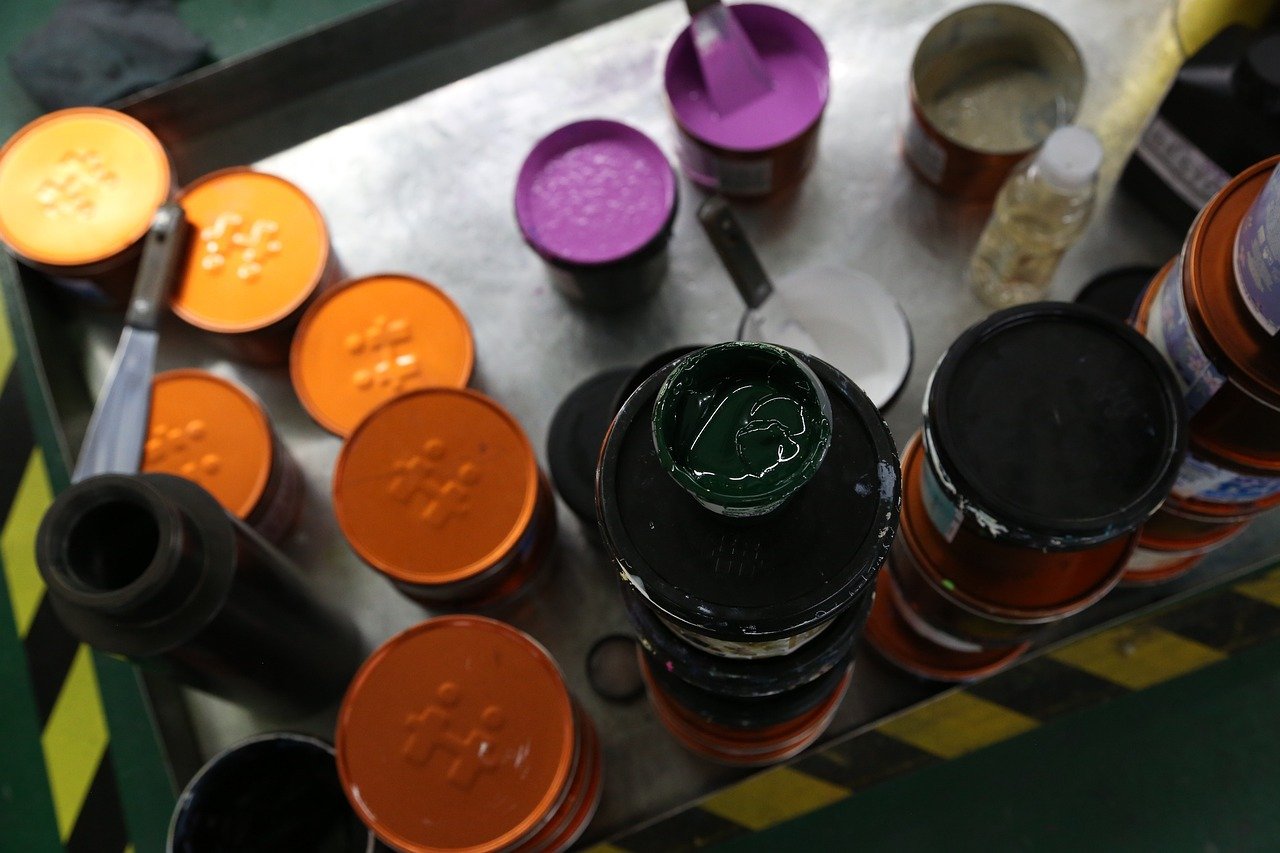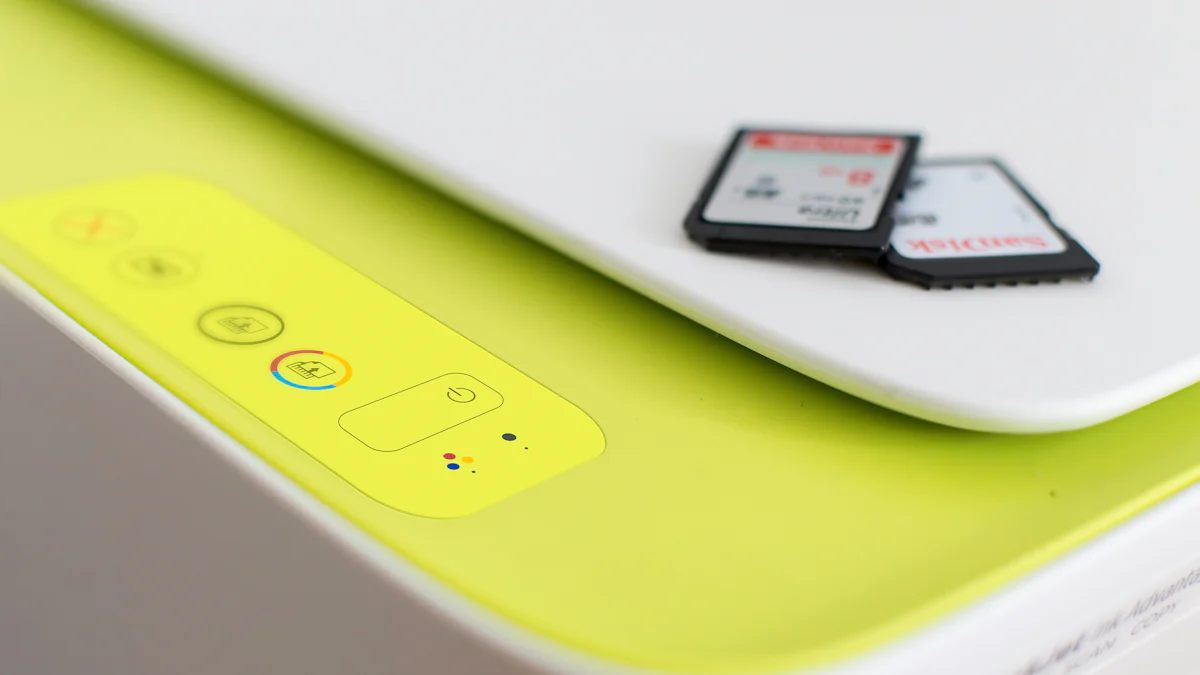
When it comes to DTF powder printing, not every material is a good fit. Here’s a quick list of materials that are material not friendly to DTF powder printing:
Polyester: Struggles with ink adhesion.
Nylon: Faces heat resistance issues.
Vinyl: Prone to melting under heat.
Certain Plastics: Non-porous surfaces hinder ink bonding.
Rough Textiles: Uneven surfaces disrupt print quality.
Choosing the right material ensures vibrant and durable prints. For a detailed guide on suitable materials, check out our article on materials good for DTF powder printing.
Key Takeaways
Avoid polyester for DTF printing as it struggles with ink adhesion, leading to prints that may peel or fade.
Nylon is not suitable due to its heat sensitivity, which can cause warping or melting during the printing process.
Vinyl should be avoided because it melts under the high temperatures used in DTF printing, resulting in deformed prints.
Certain plastics are incompatible due to their non-porous surfaces, which hinder proper ink bonding.
Rough textiles disrupt print quality due to uneven surfaces, leading to patchy and unclear prints.
Choosing the right materials, like cotton or high cotton blends, ensures vibrant and durable prints.
Understanding the unique requirements of DTF printing helps in selecting appropriate materials for successful outcomes.
List of Materials Not Friendly to DTF Powder Printing

When choosing materials for DTF powder printing, you must be cautious. Some materials simply do not work well with this printing method. Here’s a breakdown of those materials and why they are not suitable:
Synthetic Fabrics
Polyester
Polyester is a popular fabric due to its durability and vibrant color retention. However, it struggles with ink adhesion in DTF powder printing. The synthetic nature of polyester can cause the ink to sit on the surface rather than bond effectively. This results in prints that may peel or fade over time.
Nylon
Nylon, another synthetic fabric, faces issues with heat resistance. The high temperatures required in DTF printing can cause nylon to warp or melt, leading to distorted prints. This makes nylon a material not friendly to DTF powder printing.
Heat-Sensitive Materials
Vinyl
Vinyl is prone to melting under the heat used in DTF printing. This can cause the material to deform, ruining the print. The heat sensitivity of vinyl makes it unsuitable for this printing method.
Certain Plastics
Certain plastics have non-porous surfaces that hinder ink bonding. The ink cannot penetrate these surfaces, leading to poor adhesion and prints that easily rub off. This characteristic makes these plastics a material not friendly to DTF powder printing.
Textured Surfaces
Rough Textiles
Rough textiles present uneven surfaces that disrupt print quality. The texture prevents the ink from spreading evenly, resulting in patchy and unclear prints. This makes rough textiles unsuitable for DTF powder printing.
Uneven Surfaces
Uneven surfaces, similar to rough textiles, cause issues with ink distribution. The irregularities prevent a smooth application of the ink, leading to inconsistent prints. This makes them a poor choice for DTF powder printing.
For a comprehensive guide on materials that work well with DTF powder printing, check out our article on materials good for DTF powder printing.
Why These Materials Are Incompatible
Understanding why certain materials are not suitable for DTF powder printing is crucial for achieving high-quality results. Let’s explore the technical reasons and practical examples that highlight these incompatibilities.
Technical Reasons
Heat Resistance Issues
Materials like nylon and vinyl face significant challenges due to their heat sensitivity. DTF powder printing involves high temperatures, which can cause these materials to warp or melt. This deformation disrupts the printing process, leading to unsatisfactory results. You need to choose materials that can withstand the heat without altering their structure.
Adhesion Problems
Adhesion is another critical factor. Synthetic fabrics such as polyester often struggle with ink adhesion. The ink tends to sit on the surface rather than bonding effectively. This issue results in prints that may peel or fade over time. Non-porous surfaces, like certain plastics, also hinder ink bonding, causing the prints to rub off easily. Selecting materials with good adhesive properties ensures vibrant and long-lasting prints.
Practical Examples
Case Study: Polyester
Polyester is a common choice due to its durability and vibrant color retention. However, in DTF powder printing, polyester’s synthetic nature poses challenges. The ink does not bond well, leading to prints that may not last. Despite its popularity, polyester remains a material not friendly to DTF powder printing.
Case Study: Vinyl
Vinyl’s heat sensitivity makes it unsuitable for DTF printing. The high temperatures can cause vinyl to melt, resulting in deformed prints. This characteristic makes vinyl a poor choice for this printing method. You should avoid using vinyl if you aim for consistent and high-quality prints.
For a comprehensive guide on materials that work well with DTF powder printing, check out our article on materials good for DTF powder printing.
Common Misconceptions
Misconception 1: All Fabrics Are Suitable
You might think that any fabric can work with DTF powder printing. This belief is common, but it’s not accurate. Not all fabrics are ideal for this method. Each fabric has unique properties that affect the printing outcome. For instance, some fabrics struggle with ink adhesion, while others may not withstand the heat involved in the process.
Choosing the right fabric is crucial. It ensures vibrant, long-lasting, and professional-grade results. Fabrics with good colorfastness and resistance to fading, stretching, and washing are ideal for DTF prints. Understanding these properties can significantly impact the quality of your projects.
Here’s a quick comparison:
Fabric Type | Why It’s Not Suitable for DTF Printing |
|---|---|
Polyester | Struggles with ink adhesion |
Nylon | Faces heat resistance issues |
For more information on materials that work well with DTF powder printing, check out our article on materials good for DTF powder printing.
Misconception 2: DTF Works Like Other Printing Methods
Another common misconception is that DTF printing works like other printing methods. You might assume that if a material works for one type of printing, it will work for DTF as well. This is not the case. DTF printing has unique requirements and challenges.
The adhesive used in DTF supplies might not bond well with certain fabrics. This limitation affects your customization options. Unlike other methods, DTF requires materials that can handle both the heat and the adhesive properties of the ink.
Understanding these differences is essential. It helps you select the right materials and achieve the best results. Always consider the specific needs of DTF printing when choosing your materials. For a detailed guide on suitable materials, refer to our article on materials good for DTF powder printing.
Recommendations for Alternative Materials
When selecting materials for DTF powder printing, choosing the right ones ensures vibrant and durable results. Here are some recommendations for fabrics and surfaces that work well with this printing method.
Compatible Fabrics
Cotton
Cotton stands out as one of the best choices for DTF powder printing. Its natural composition allows for excellent ink absorption, resulting in vibrant and long-lasting prints. Cotton’s compatibility with various inks makes it a reliable option for achieving professional-grade results. You can confidently use cotton for a wide range of projects, from clothing to home textiles.
Blends with High Cotton Content
Fabrics that blend cotton with other materials also perform well in DTF printing. Blends with high cotton content offer the benefits of cotton’s ink absorption while adding the durability of synthetic fibers. These blends ensure that your prints remain vibrant and withstand multiple washes without fading or cracking. They provide versatility for various applications, making them a practical choice for many printing needs.
Other Suitable Surfaces
Smooth, Heat-Resistant Materials
For non-fabric surfaces, opt for smooth, heat-resistant materials. These surfaces allow for even ink distribution and prevent issues related to heat sensitivity. Materials like certain plastics and ceramics, when smooth and heat-resistant, can serve as excellent canvases for DTF printing. They ensure that the ink adheres properly and maintains its vibrancy over time.
By selecting these recommended materials, you can achieve high-quality and durable prints with DTF powder printing. For more information on materials that are ideal for this printing method, check out our article on materials good for DTF powder printing.
Choosing the right materials for DTF powder printing is crucial for achieving high-quality results. Some materials simply do not work well with this method. Here’s a quick reference:
Material | Why It’s Not Suitable for DTF Printing |
|---|---|
Polyester | Struggles with ink adhesion |
Nylon | Faces heat resistance issues |
Vinyl | Prone to melting under heat |
Certain Plastics | Non-porous surfaces hinder ink bonding |
Rough Textiles | Uneven surfaces disrupt print quality |
Selecting materials that are compatible with DTF printing ensures vibrant and durable prints. For more information on materials that are a good fit for DTF powder printing, check out our article on materials good for DTF powder printing.
FAQ
What is DTF powder printing?
DTF powder printing, or Direct-to-Film printing, is a modern printing technique that allows you to transfer designs onto various fabrics. This method uses a special powder adhesive and film to create vibrant and durable prints. Unlike traditional methods, DTF printing offers versatility and scalability, making it ideal for custom printing businesses.
Which materials can be printed using DTF?
You can print on a wide range of fabrics using DTF printing. This includes natural fabrics like cotton and blends with high cotton content. These materials absorb ink well, ensuring vibrant and long-lasting prints. For more information on suitable materials, check out our article on materials good for DTF powder printing.
What types of inks are used in DTF printing?
DTF printing uses specialized inks designed for fabric printing. These inks are formulated to provide vivid colors and excellent adhesion to the film and fabric. The inks work in conjunction with the powder adhesive to ensure the print remains durable and vibrant over time.
Why are some materials not suitable for DTF powder printing?
Certain materials, like polyester and nylon, struggle with ink adhesion or heat resistance. These issues can lead to prints that peel, fade, or warp. Understanding the properties of each material helps you choose the right ones for successful DTF printing.
Can I use DTF printing on textured surfaces?
Textured surfaces, such as rough textiles, pose challenges for DTF printing. The uneven texture can disrupt ink distribution, resulting in patchy prints. For best results, opt for smooth surfaces that allow even ink application.
How does DTF printing differ from other printing methods?
DTF printing differs from other methods in its use of film and powder adhesive. This technique requires materials that can handle both the heat and adhesive properties of the ink. Unlike other methods, DTF offers greater versatility and scalability for custom printing.
Is DTF printing suitable for all fabrics?
Not all fabrics are suitable for DTF printing. While natural fabrics like cotton work well, synthetic fabrics like polyester may face adhesion issues. Always consider the fabric’s properties before choosing it for DTF printing.
What are the benefits of using DTF printing?
DTF printing offers several benefits, including versatility, scalability, and the ability to produce high-quality prints on various fabrics. This method allows you to create vibrant and durable designs, making it a reliable option for custom printing businesses.
How can I ensure high-quality results with DTF printing?
To achieve high-quality results, select compatible materials and use the right inks and powder adhesive. Ensure your equipment is well-maintained and follow best practices for DTF printing. By doing so, you can produce vibrant and long-lasting prints.
Where can I find more information on materials suitable for DTF printing?
For a comprehensive guide on materials that work well with DTF powder printing, check out our article on materials good for DTF powder printing. This resource provides valuable insights into selecting the right materials for successful printing.
